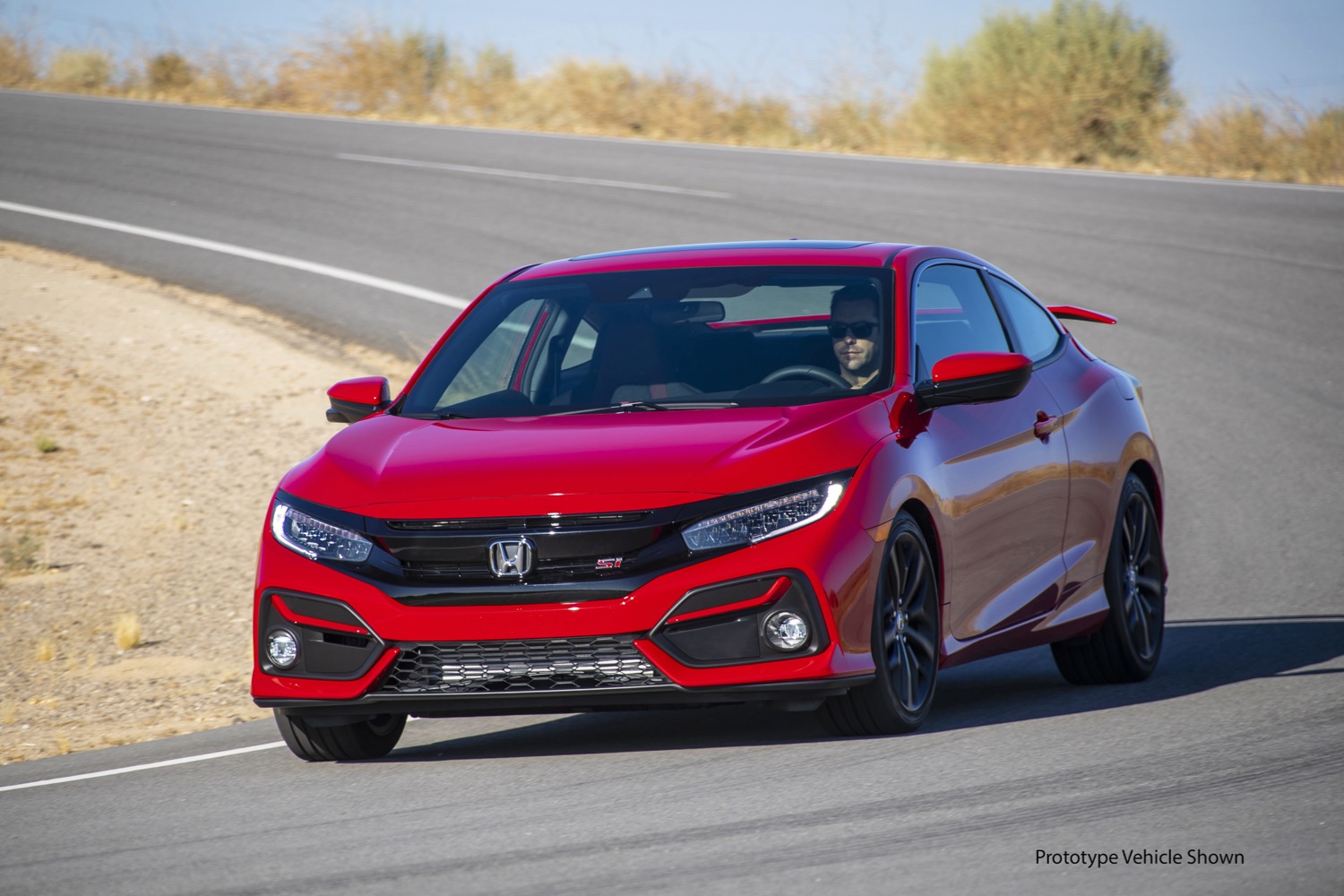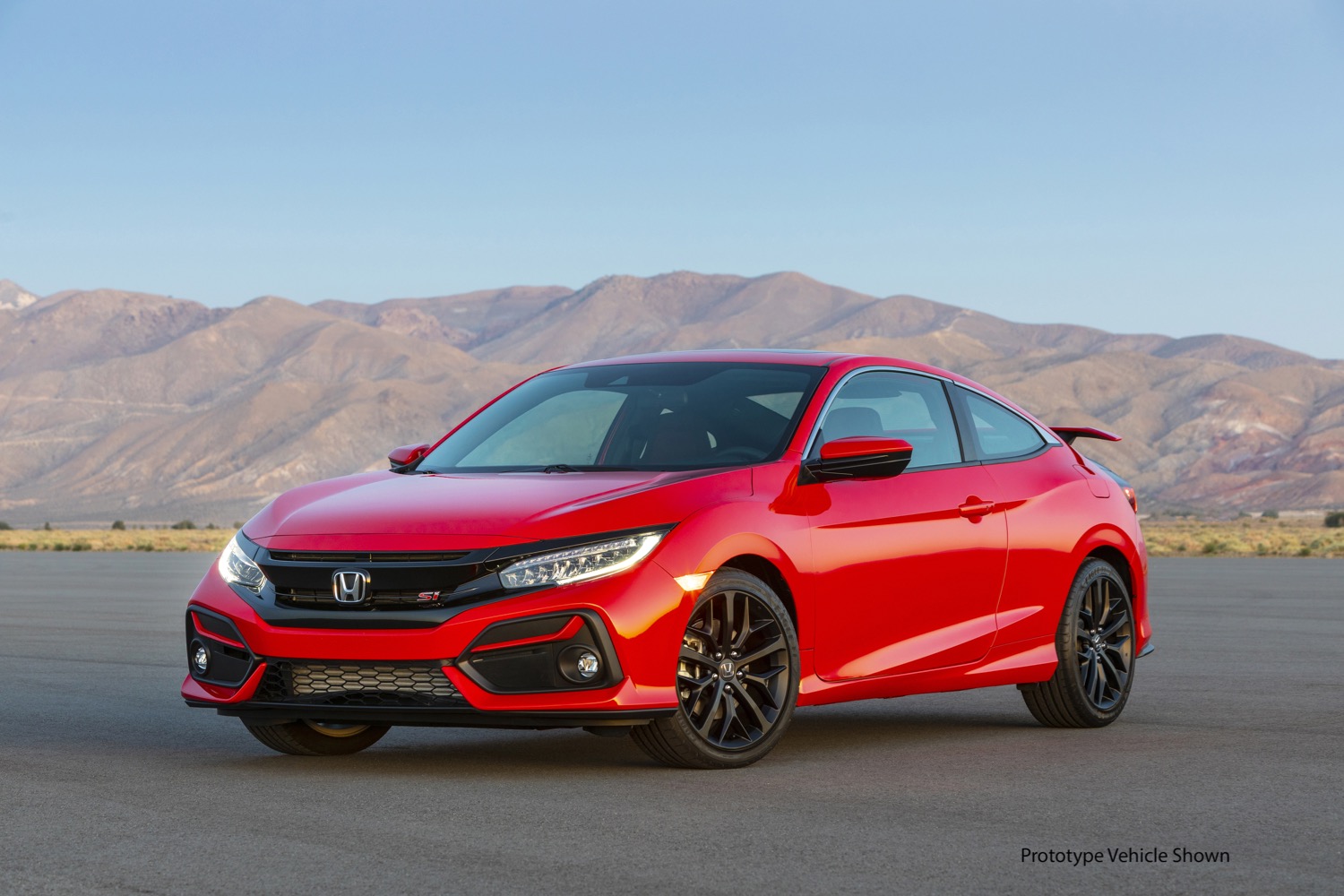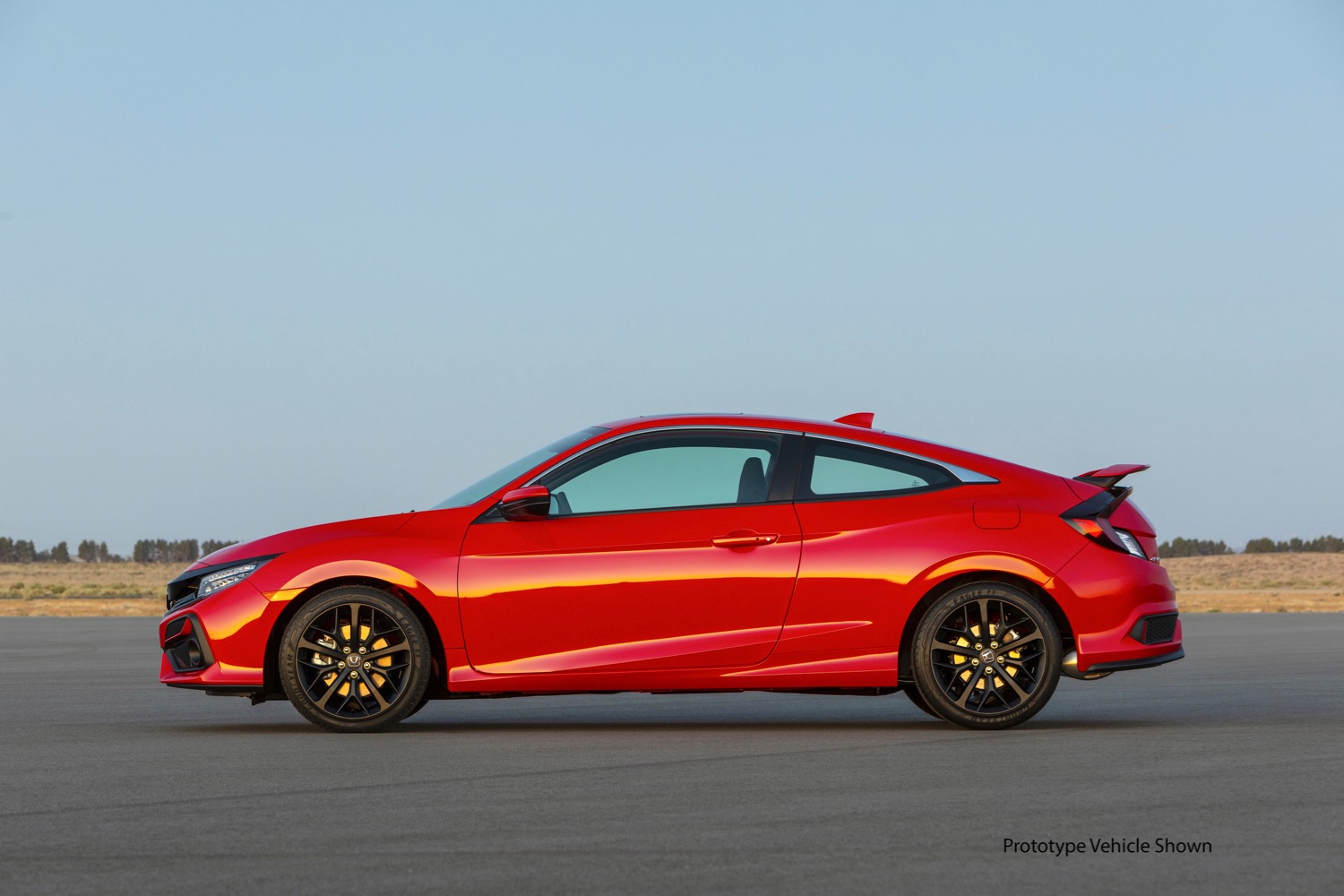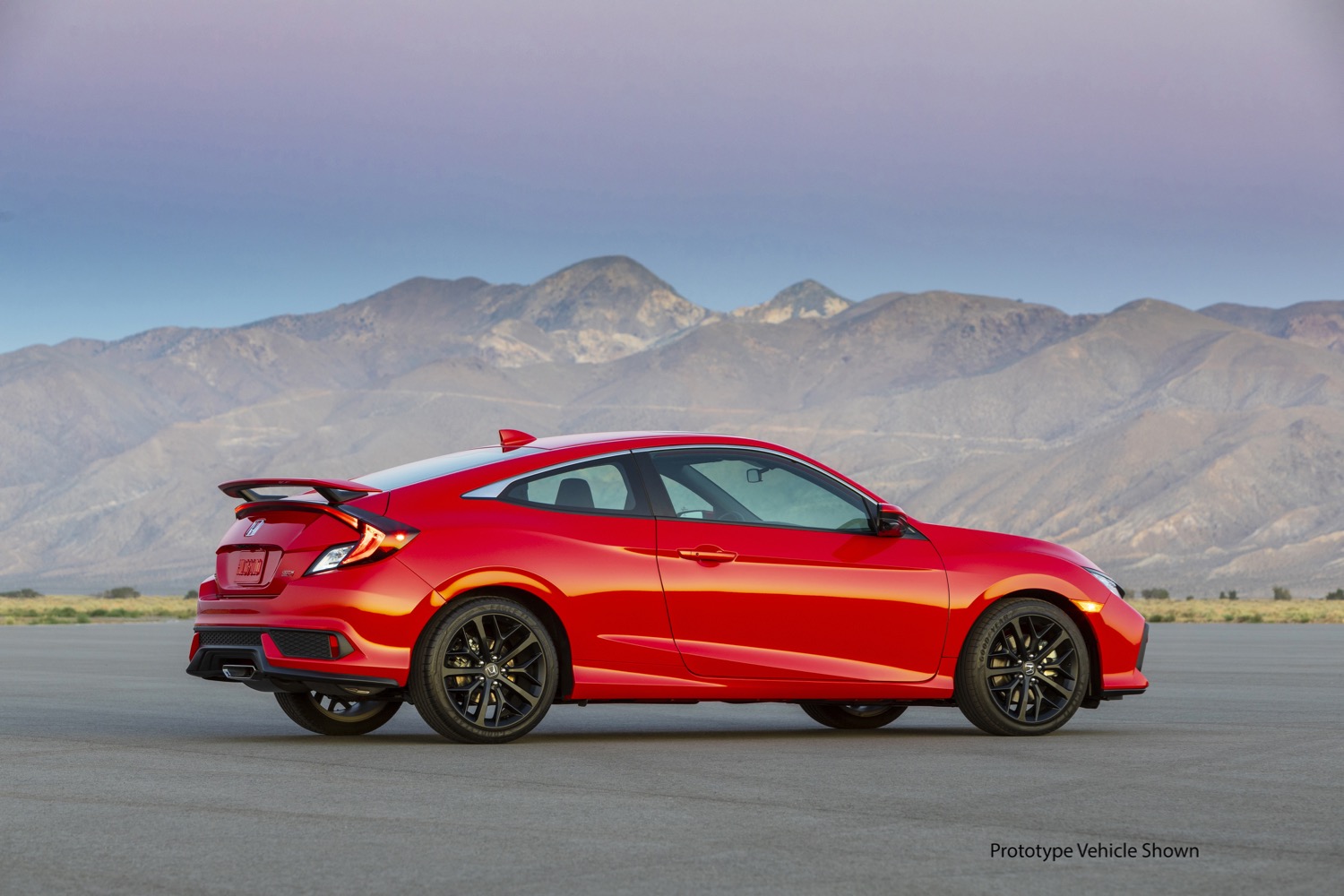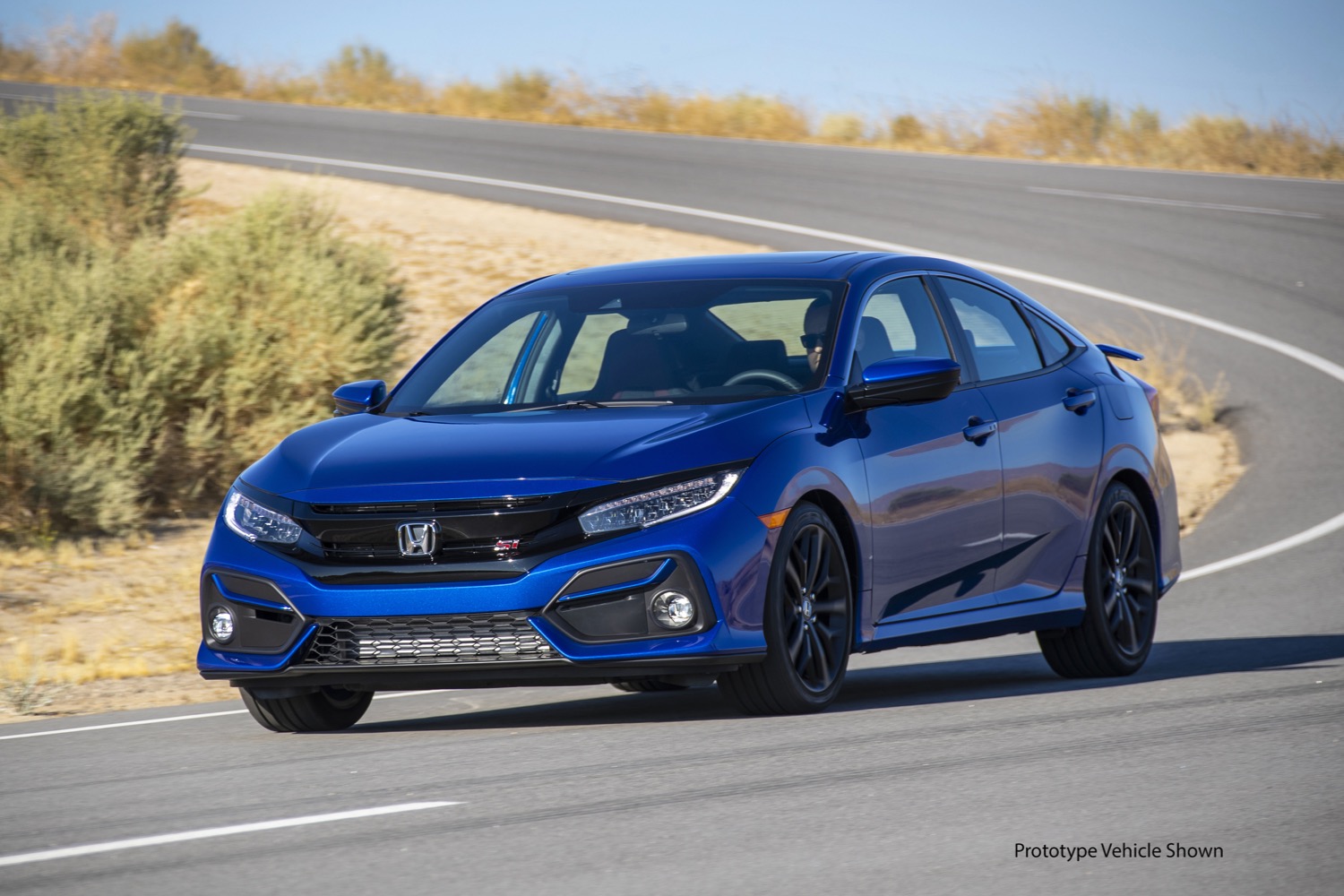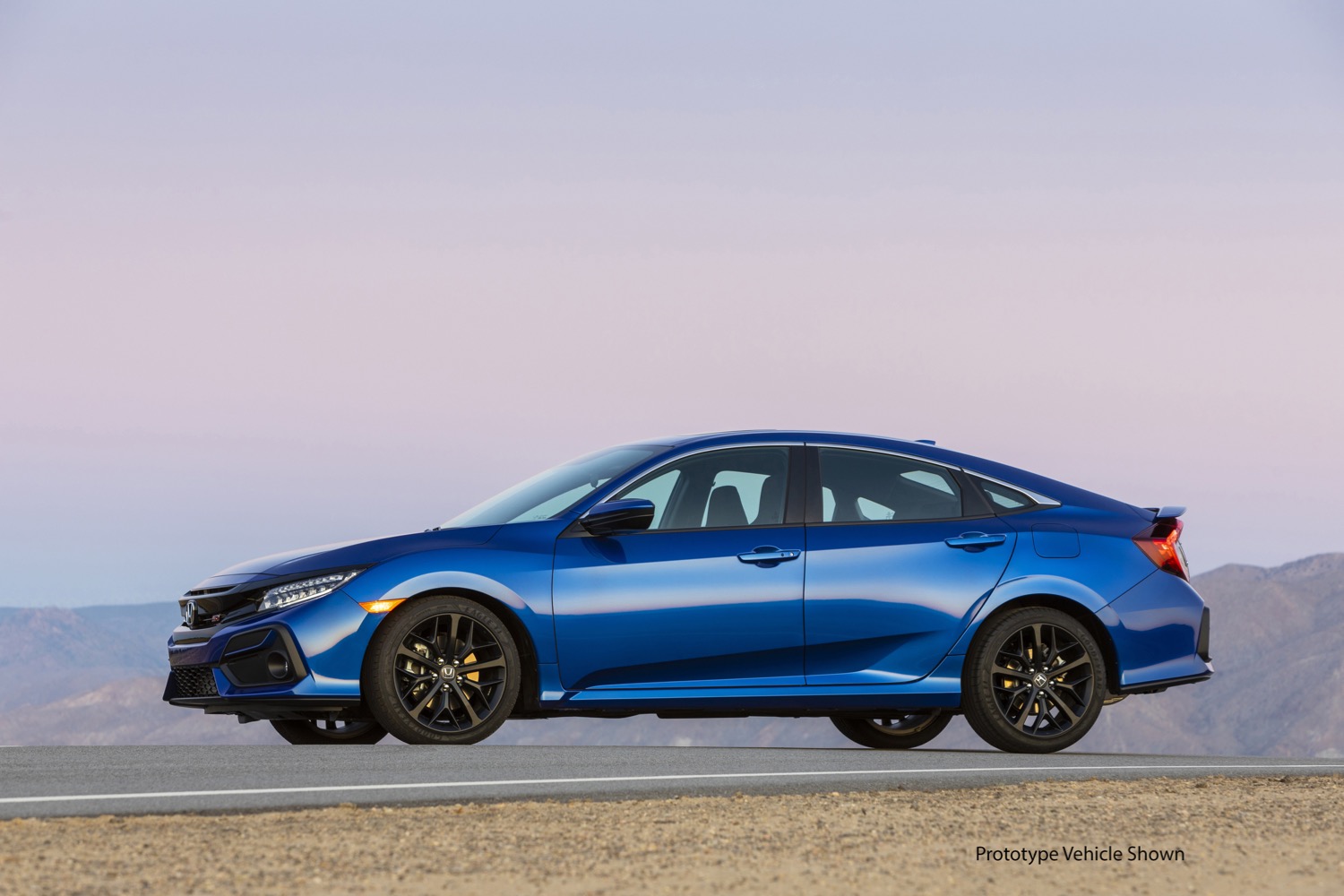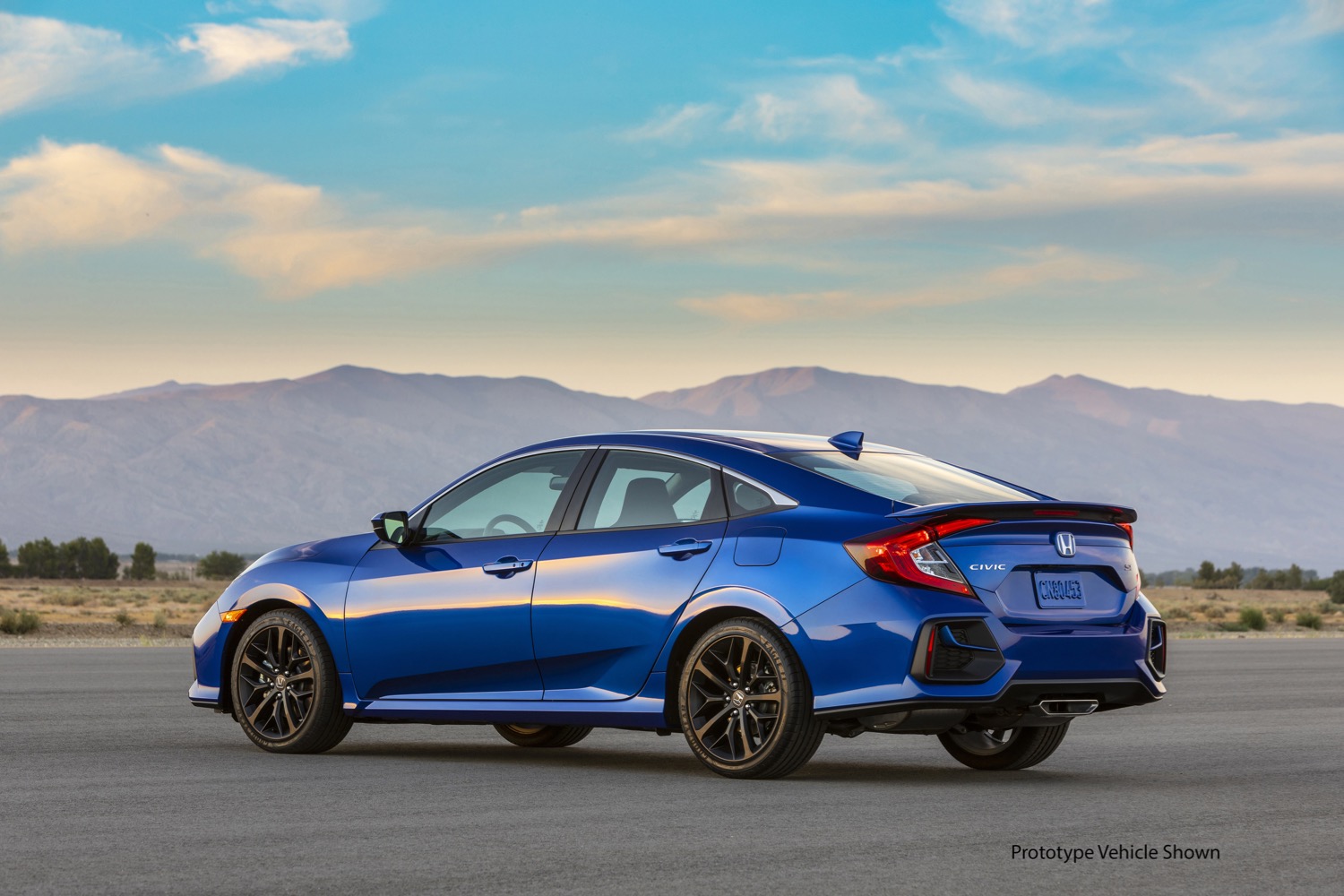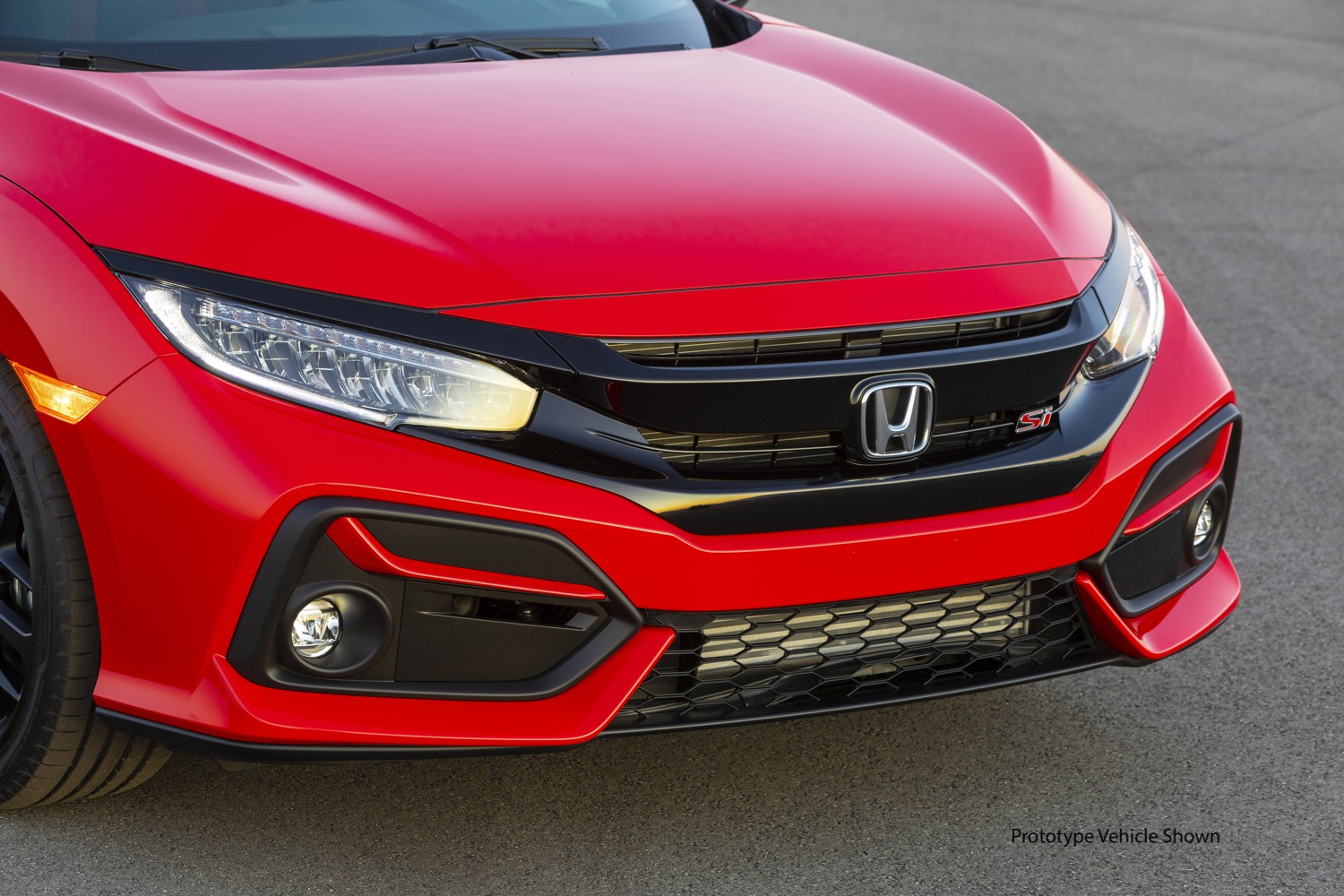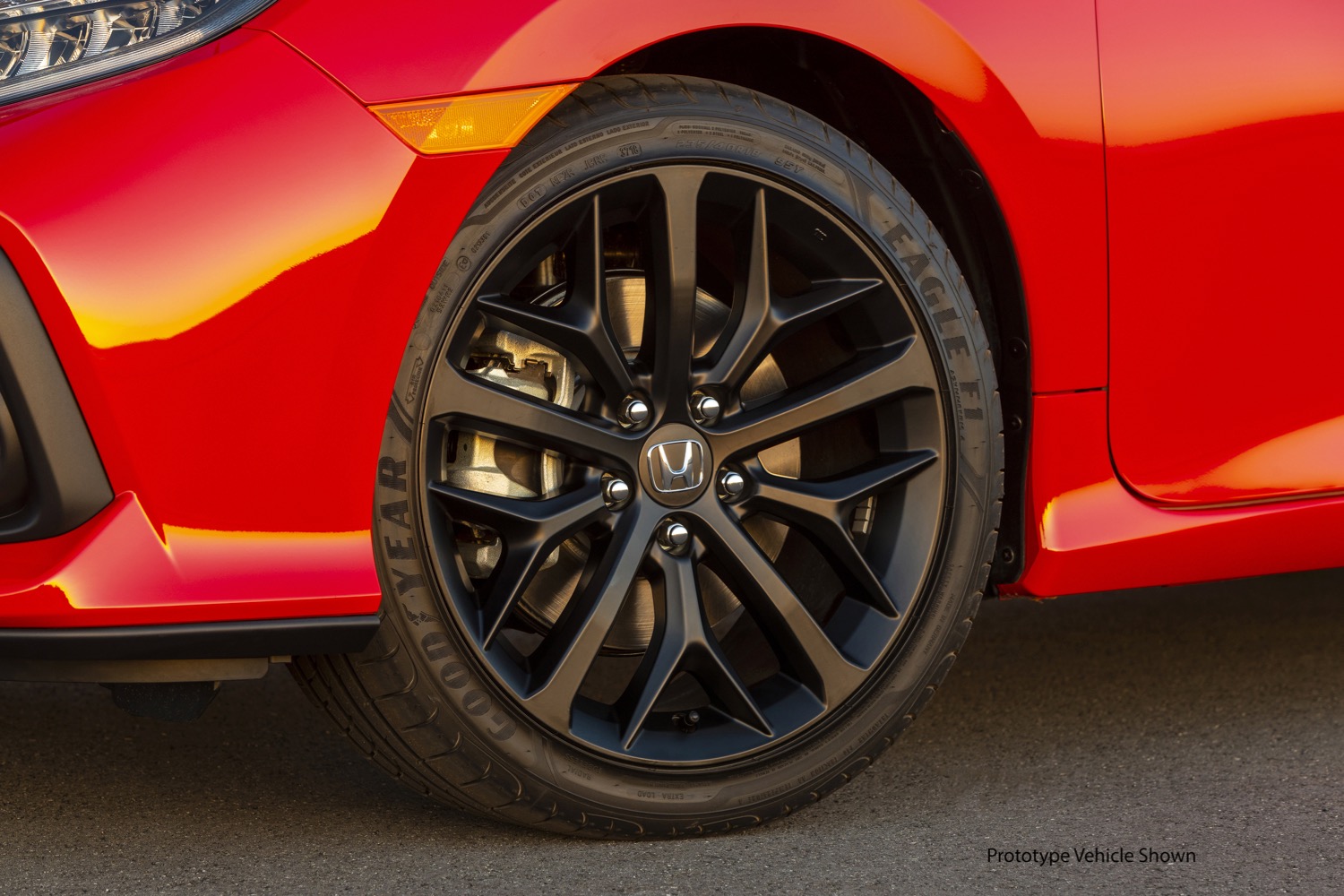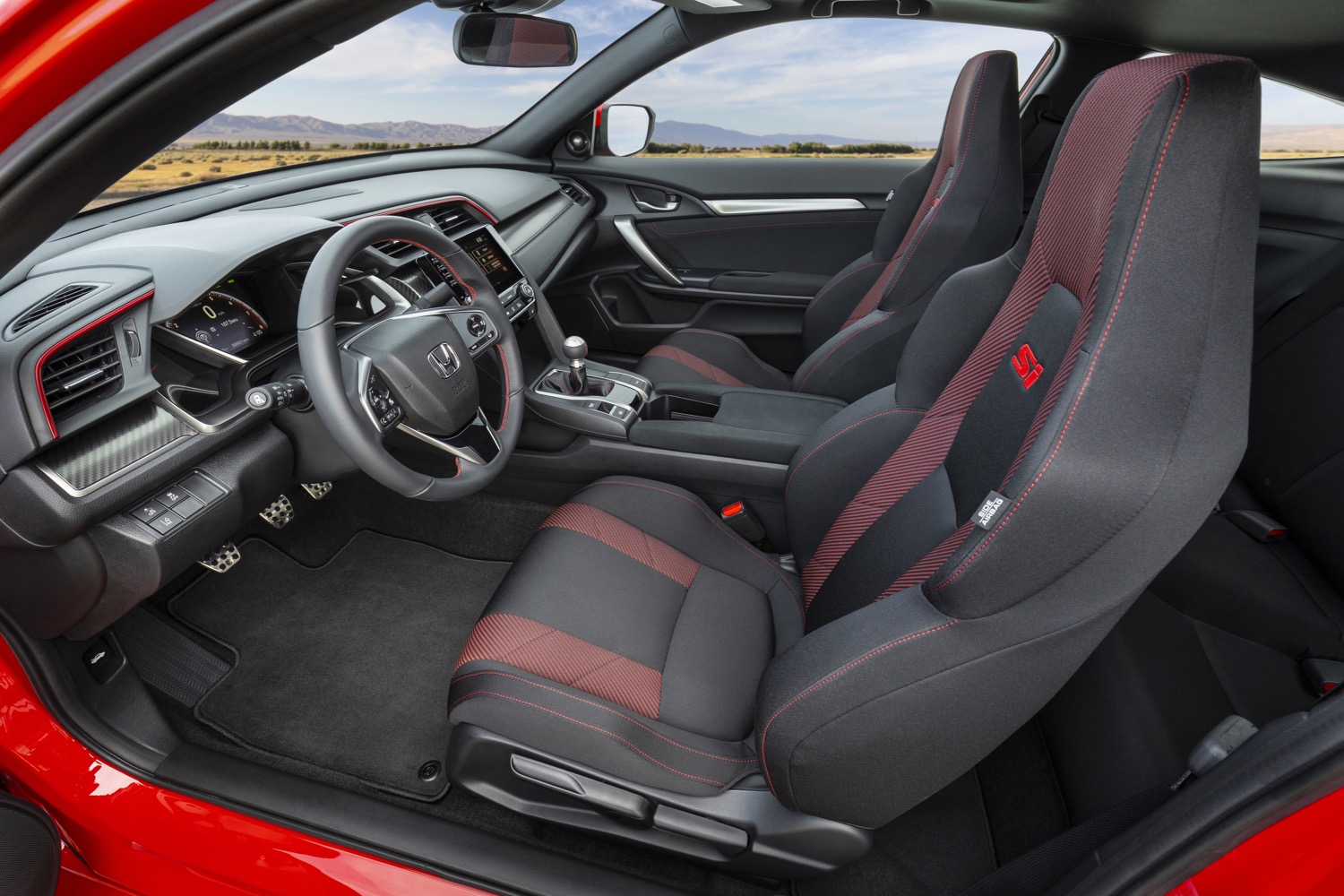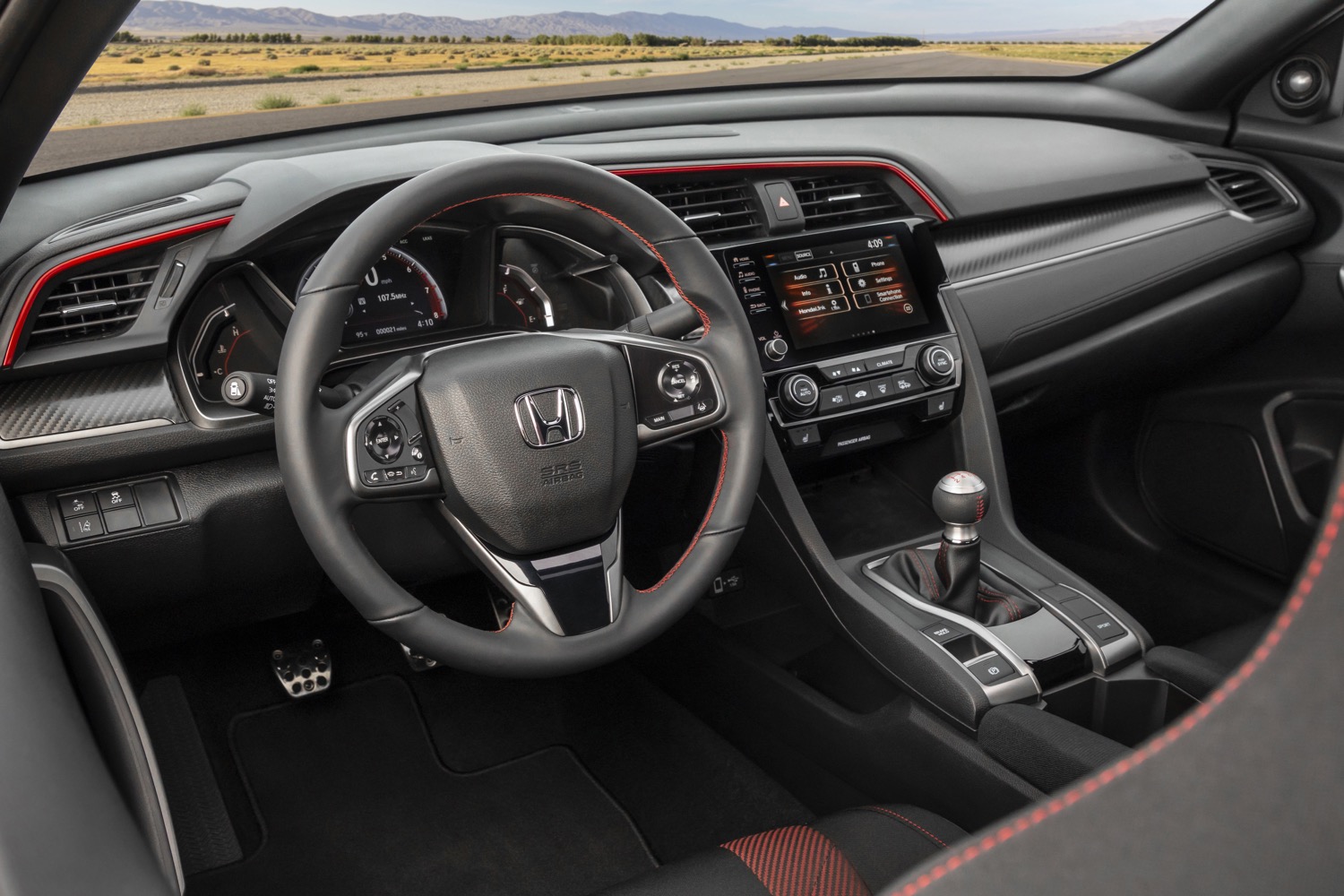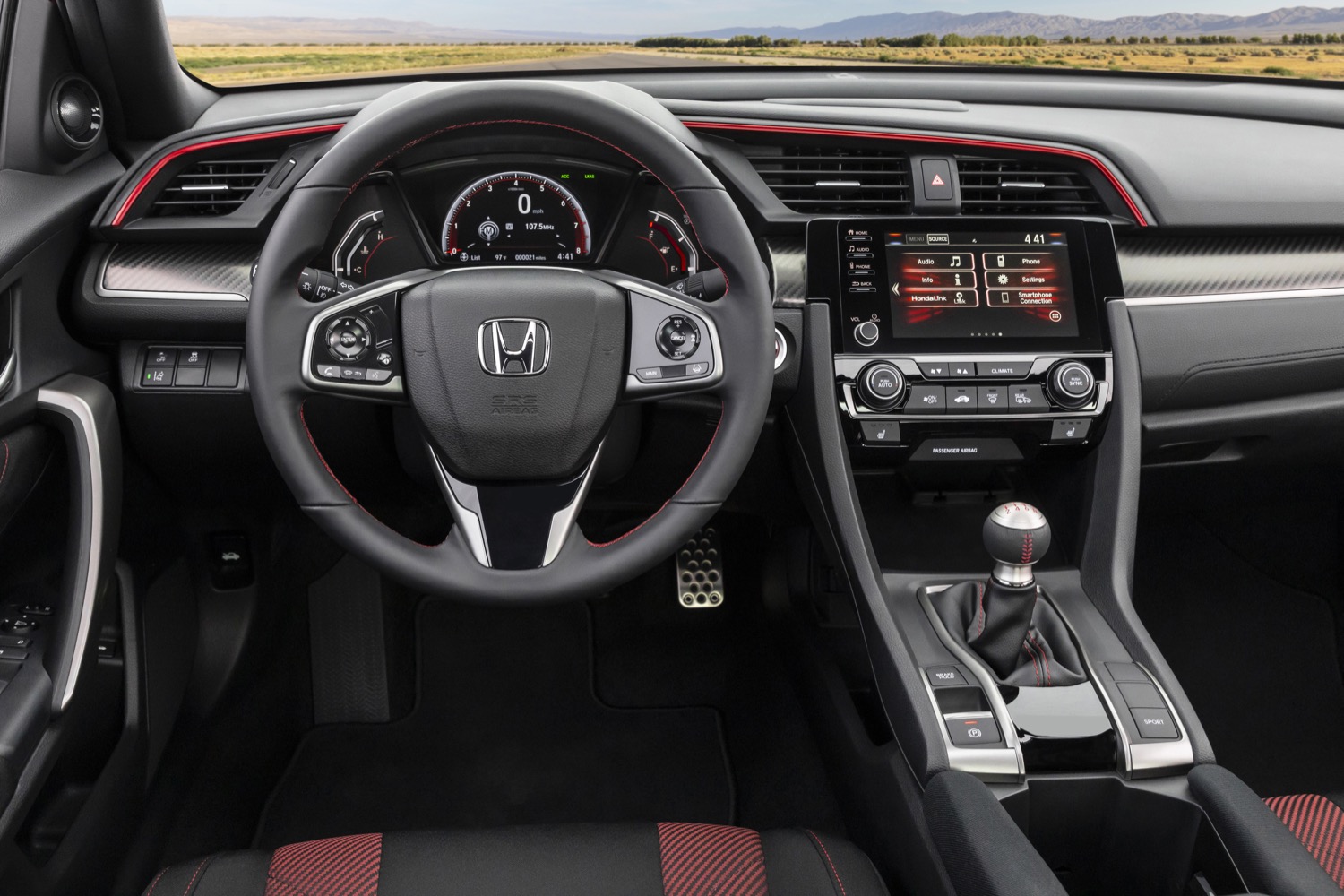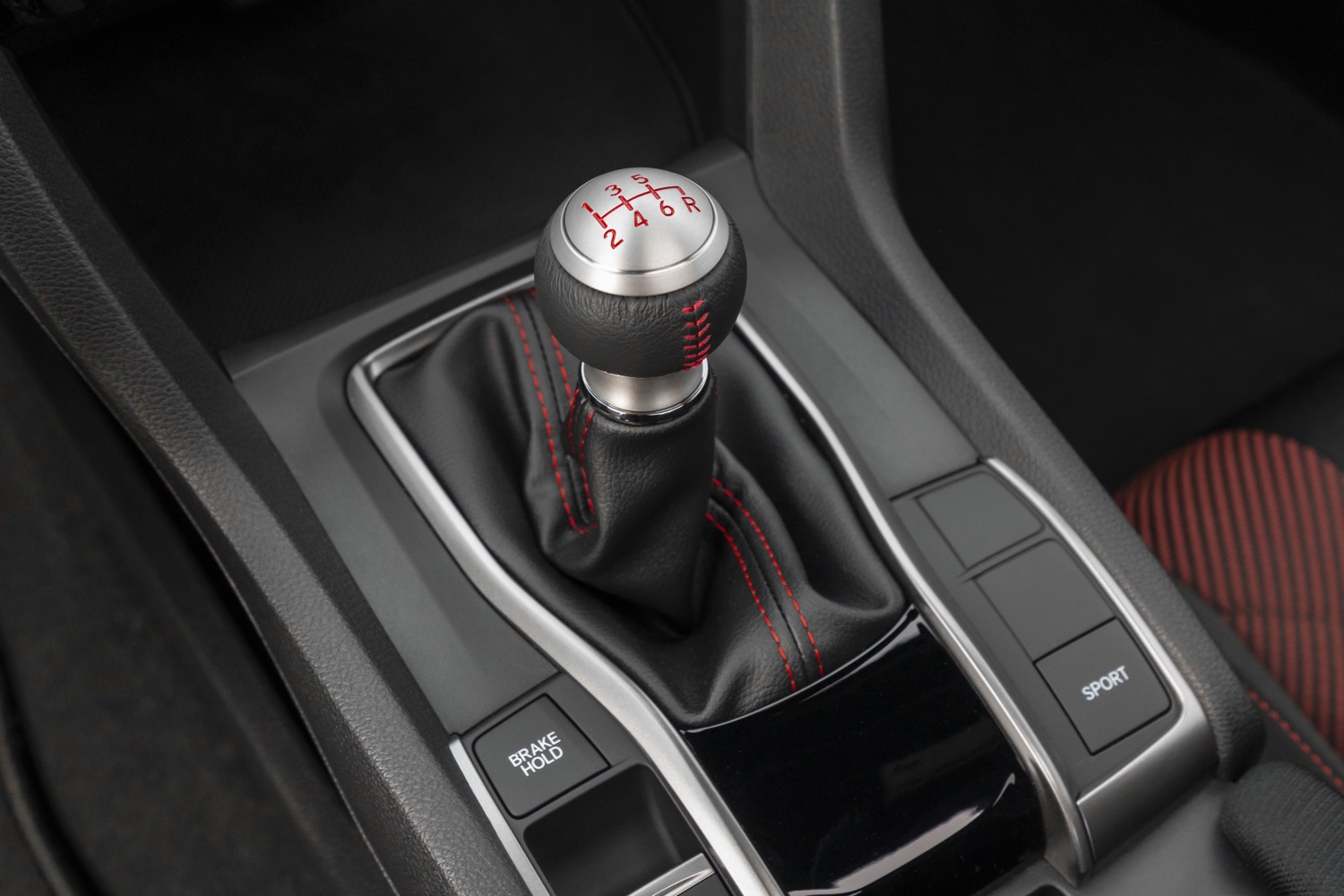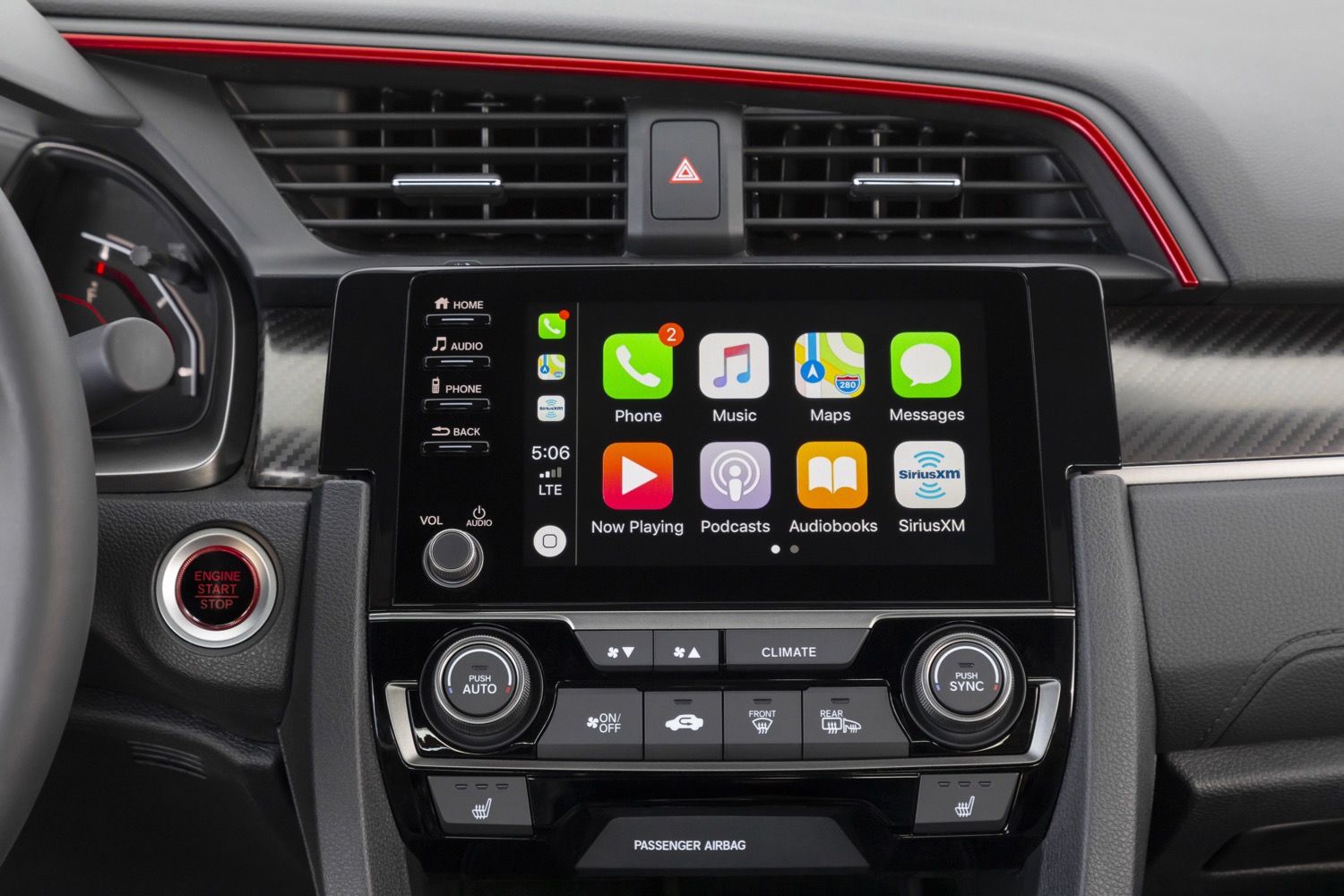The Honda Civic lineup is getting a series of small updates to keep it fresh. With the base Civic coupe and sedan, as well as the hatchback, already taken care of, it’s time for the 2020 Honda Civic Si sedan and coupe to get some updates. These sporty Civic models get minor styling tweaks, as well as a handful of mechanical and tech changes.
As before, the Si models get more aggressive styling than the base Civic coupe and sedan. Changes for 2020 include a reworked grille, and new LED headlights that have a wider and longer beam, according to Honda. Si models now get matte black 18-inch wheels with standard all-season tires. Summer tires are available as a paid option. The Si models continue to be distinguishable from the base Civic coupe and sedan by large rear spoilers and center-exit exhausts.
On the inside, the Civic Si coupe and sedan get reworked front seats and some extra red trim on the dashboard. No changes were made to the 7.0-inch touchscreen infotainment system, as that got a major update for the 2019 model year, including the addition of more analog controls to make it easier to use. Apple CarPlay and Android Auto are standard.
Civic Si models continue to use a 1.5-liter turbocharged four-cylinder engine, making 205 horsepower and 192 pound-feet of torque. Power is sent to the front wheels through a six-speed manual transmission (Honda doesn’t offer an automatic) and a helical limited-slip differential. If that doesn’t sound good enough to you, Honda also offers the 306-hp Civic Type R, although it’s only available as a hatchback.
For 2020, Si models get a 6-percent-shorter final-drive ratio. Honda said this should improve “acceleration feel” but didn’t provide any hard numbers. Honda also added Active Sound Control for 2020, which uses the audio system to artificially enhance the sound of the engine.
Both the Si coupe and sedan get the Honda Sensing suite of driver aids as standard equipment for 2020. This includes adaptive cruise control, autonomous emergency braking, lane keep assist, lane departure warning, road departure mitigation, and automatic high beams.
Pricing for the 2020 Honda Civic Si starts at $25,930 for both the coupe and sedan, including a mandatory $930 destination charge. You can add summer tires to either model for an extra $200.
Editors' Recommendations
- Honda Civic vs. Honda Accord
- The best coupes
- 2020 Honda Civic hatchback keeps the manual-transmission faith
- 2020 Honda Insight hybrid returns for its sophomore year largely unchanged
